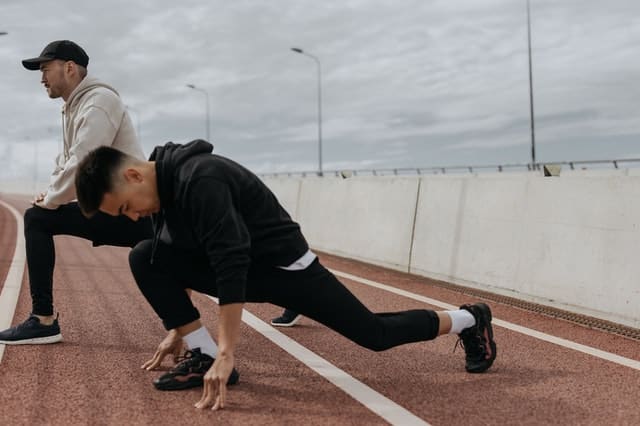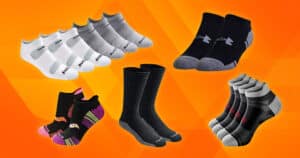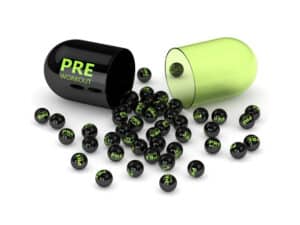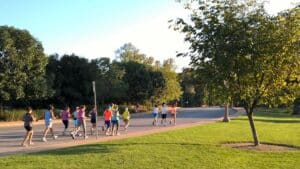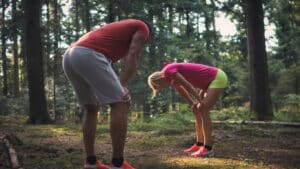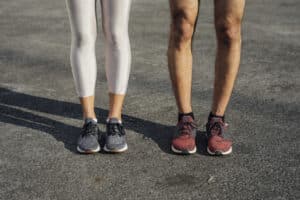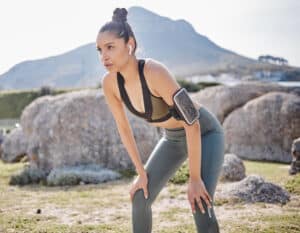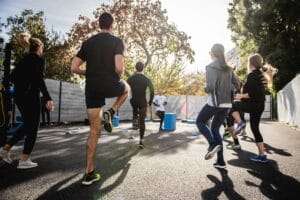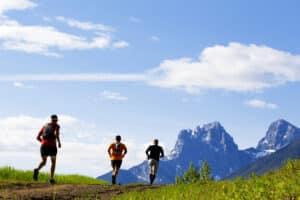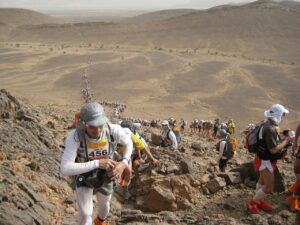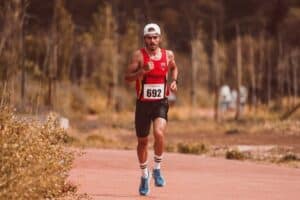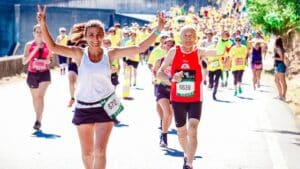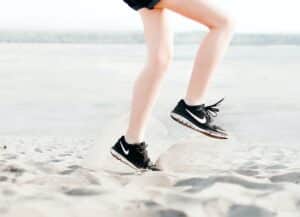Running uses body muscles in the feet, legs, and back and if you have just picked up running, there are many things to take care of. To keep your muscles flexible and increase mobility, here you will find some running stretches for beginners.
Warming up exercises before running and performing stretches afterwards are extremely important. It prepares your body mentally and physically for this demanding activity.
A warm-up is meant to prepare your heart, lungs, and muscles. Similarly, the post run stretches aim to bring your body back to its resting state gradually.
Pre and post running stretches shouldn’t be painful, and if it does cause pain, then they should immediately be stopped. Beginners need to know that stretching should be done properly and carefully.
There is a chance of getting injured, such as causing a cramp or pulling a hamstring.
So to help out new runners, here are some of the best running stretches for beginners.
Static Stretching Vs Dynamic Stretching
Stretching can help improve your health, relieve muscle pain and keep your athletic performance at an optimum level. However, before you begin your stretching or exercises before running, it is best to know which type of stretches to perform. The main techniques are static and dynamic stretching.
Static Stretching
The most common type of stretching is the static stretch. Static stretching means when you hold a muscle stretch for a certain period. It is carried out in successive repetitions for 15-60 seconds.
Pre-run static stretching can increase the muscle’s ability to work appropriately by reducing muscle tension, increasing flexibility and range of motion. At the same time, post-run stretches re-align muscle fibers and relax them.
It is vital to feel the muscle tension and gently stretch it to perform a static stretch. Remember not to yank or jerk while stretching; this could tense the muscle as it protects itself, which is known as the stretch reflex.
Dynamic Stretching
Dynamic stretching is opposite to static stretching and involves active movements where muscles and joints are put through the full range of motion. This type of stretch is not held longer than 2-3 seconds and is repeated 10-15 times.
Dynamic stretches are used to warm up the body, and the muscle movements get the body ready and fired up for athletics, weight lifting, or running outdoors or on a treadmill. If you are new to treadmills then don’t forget the treadmill running tips for beginners.
A dynamic stretch is helpful because they are used briefly, which helps the muscles increase in length without sacrificing muscle tension. This way, the muscle tension helps increase the range of motion without much excretion.
Running Stretches for Beginners To Achive Workout Mobility
Most runners might skip stretching exercises before running or perform them incorrectly, resulting in muscle cramps and decreased range of motion. Running is a demanding activity, and it requires a warm-up before it and cooling down afterwards.
The warm-up gets the heart rate going and raises the body temperature. During a warm-up, gently take every major joint through its full range of motion to lubricate it for a comfortable movement.
After that, you can raise your heart rate by doing certain aerobic activities.
After your running activity, segway to a slow jog and then walk to begin the cool-down process. Once your heart rate comes down to normal, you can take a break. This gradual process takes blood from working muscles to the rest of the body to create a balance. You can also manage and plan your workout routine by using some of the best free running apps for beginners.
After establishing benefits, stretching techniques and knowing when to stretch, now let’s turn our attention to the best running stretches for beginners.
Lower Back Stretches
Lower back pain is common among adults, and it can be caused by not recovering properly from a running exercise. A knee hug stretches the lower back and hamstring and relieves muscle tension.
Follow these easy steps to do a lower back or knee hug stretch.
- Lie on your back.
- Bend your knees, grab and pull them towards your chest until you feel the stretch.
- Hold it for 30 seconds and repeat it until the tension is relieved.
Quadriceps
‘Quads’ or ‘Quadriceps’ are the frontal muscles in your thigh and are often tensed due to running and improper stretching. These muscles support the knee, and their misalignment can cause knee and back pain.
The following steps can stretch the quadriceps.
- Stand upright with feet hip span aside.
- Bend your left knee and bring the left foot towards your thigh.
- Now bend your right knee in the same way, pointing the knees downwards.
- Hold this stretch for 30 seconds on both legs.
Hamstring Stretch
Hamstring muscles are at the back of your thigh and connect with hip flexors, gluteal, and calf muscle. Flexible hamstrings are essential for running because a pulled hamstring can be very painful.
You can stretch your hamstring in the following way.
- Sit on the ground while extending your leg.
- Move your foot towards the inner thigh to touch the top part of your other leg.
- Bend forward as if touching the toes and keep your back straight.
- Hold the stretch for 30 seconds.
- Return to sitting position and repeat with the other leg.
Calf Stretch
Calf muscle at the back of your lower legs can create heel pain and become tight if not stretched properly.
You can do the post run stretches of the calf muscle in the following steps.
- Stand with your foot behind the other leg.
- Bend your leg forward while keeping the other leg straight.
- Put your hand on your hips or a wall.
- Do not bend your knee and keep your feet firmly on the ground. If you are standing against a wall, then push against it holding the same position.
- Once you feel the stretch in your calf muscle, hold it for 30 seconds.
- Repeat the same stretch with the other foot.
Adductor Stretch
The adductor muscles are located in the inner thighs running from pelvis to thighs.
To stretch the adductor muscles, follow these steps.
- Stand with your feet wide apart.
- Put your hands on your hips, and without moving your right leg, lean to the left and bend your left leg until you feel a stretch.
- Hold this stretch for 30 seconds and repeat it on the other leg.
Hip Flexer Stretch
Hip flexor muscles are present where thighs meet the torso. The tightness of these muscles can lead to lower back and hip pain. In addition, tight hips can reduce running performance, so that a kneeling hip flexor stretch can help runners.
Following are some steps for kneeling hip flexor stretch.
- Take a kneeling position and put your hands on your upright knee.
- Lean forward gently while straightening your hip.
- Hold this position for 30 seconds when you feel tension.
- Now switch legs and repeat the stretching.
Toe Touch
The toe touch stretch can help improve hamstring muscle flexibility.
Follow these steps to perform a toe touch stretch.
- Stand with your feet together and your knees straight.
- While keeping your back as straight as possible, slowly bend your hips and lower your head.
- Take your hands towards your toes and relax your neck.
- Hold this position for 30 seconds.
- Slowly raise back up and repeat this stretching.
Downward Dog
The downward dog can help stretch calf muscles.
Here are the steps to perform this stretch.
- Get on all fours with hands under shoulders and knees under the hips.
- Begin with paddling your feet out and stretching your calves.
- Bring your hips upward to make an inverted “V” and keep your head, neck, and back in a straight line.
- Slowly lower your hips and repeat the stretch.
Ankle Mobilization
Ankles help stabilize when running. Unfortunately, this small joint gets injured and strained easily. Being a new runner you can also protect your feet and ankles by wearing best running shoes for beginner runners.
Follow these steps to improve ankle mobility.
- Keep your back straight while standing.
- Slowly raise upwards on your forefoot without locking your knees.
- Lower your heels back down after 10 seconds and repeat this stretching.
Sitting Twist
The gluteal muscles help you in running and are larger and stronger. The sitting twist works the gluteal muscles.
Do this stretch using the following steps.
- Sit on the ground and extend your legs in front of you.
- Bring the right leg over the left leg and place the left foot on the floor, bending the right knee.
- Twist to the right and use the left arm to press the right knee inwards.
- Hold the stretch for 30 seconds.
- Untwist the right leg and repeat with the left leg.
Conclusion
It is vital to know about running stretches for beginners because it can be a matter of making or breaking your running routine, muscle performance and range of motion.
It is advisable that dynamic stretching should be carried out before running. It is because it warms up the body, reduces any risks of injury and prepares your body for any activity. While the post run stretches should be static.
As the body requires to cool down and slow your heart rate. It helps lengthen the muscles, increase the flexibility and range of motion. We hope these running stretches for beginners will prove helpful.

